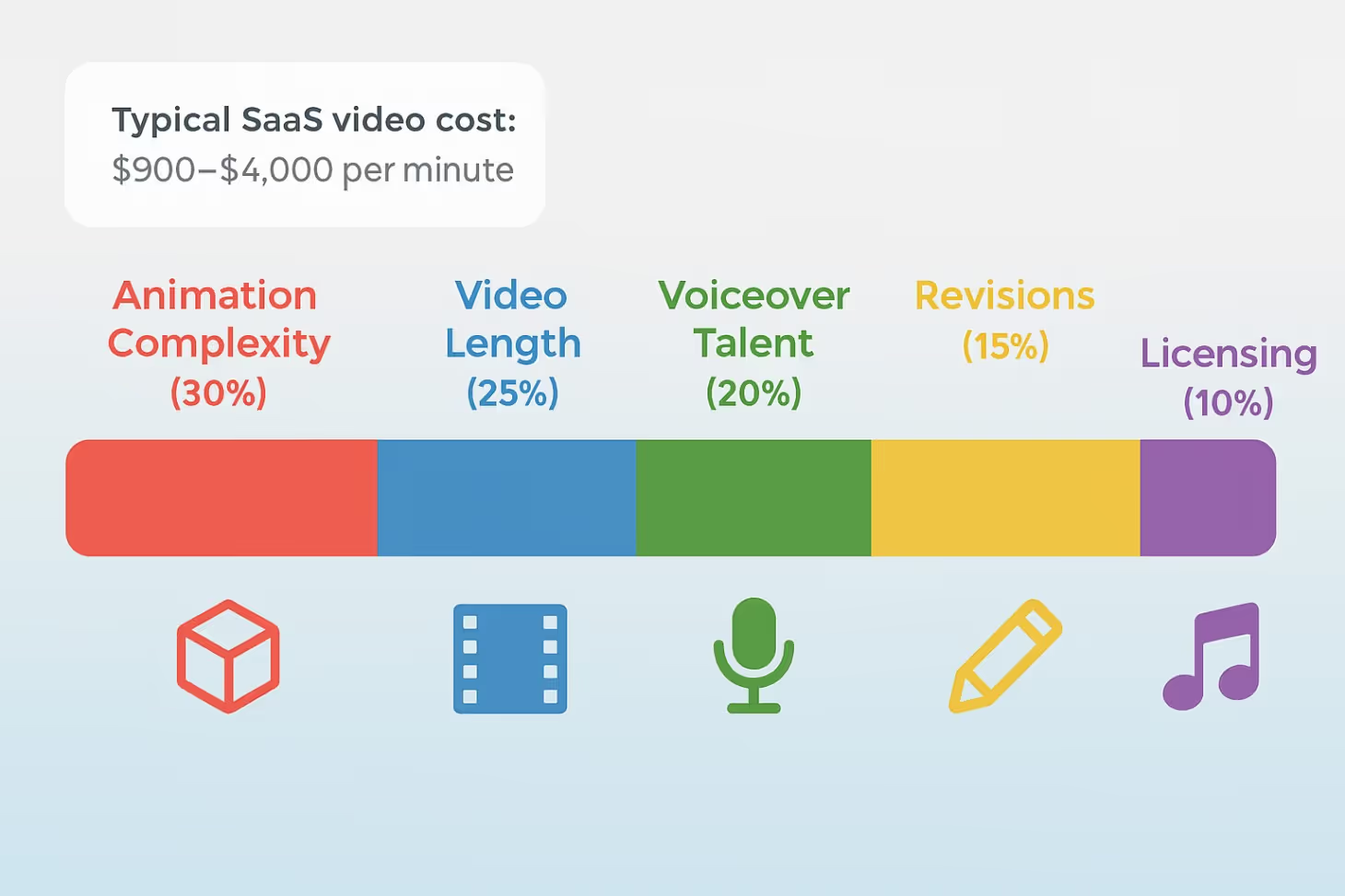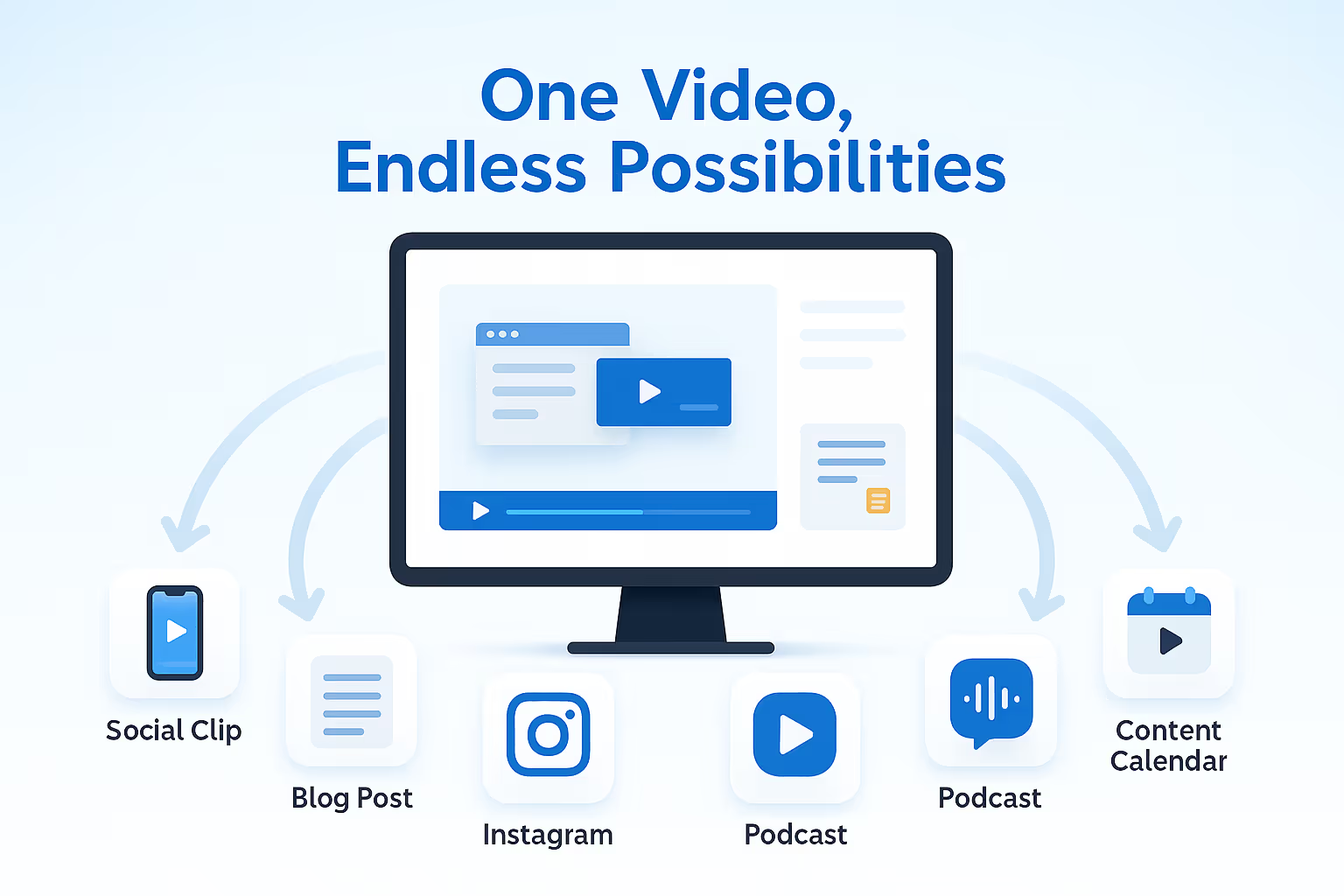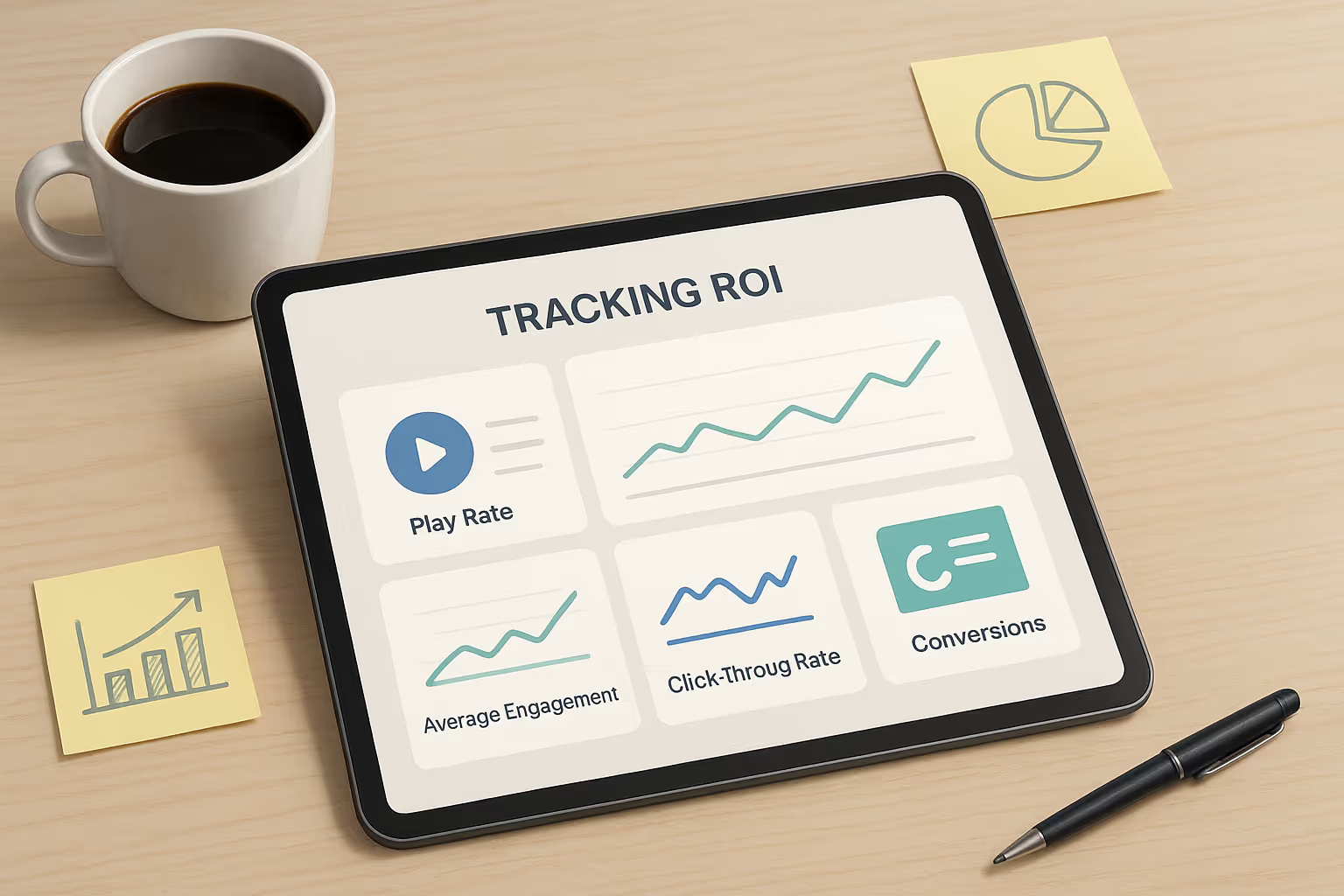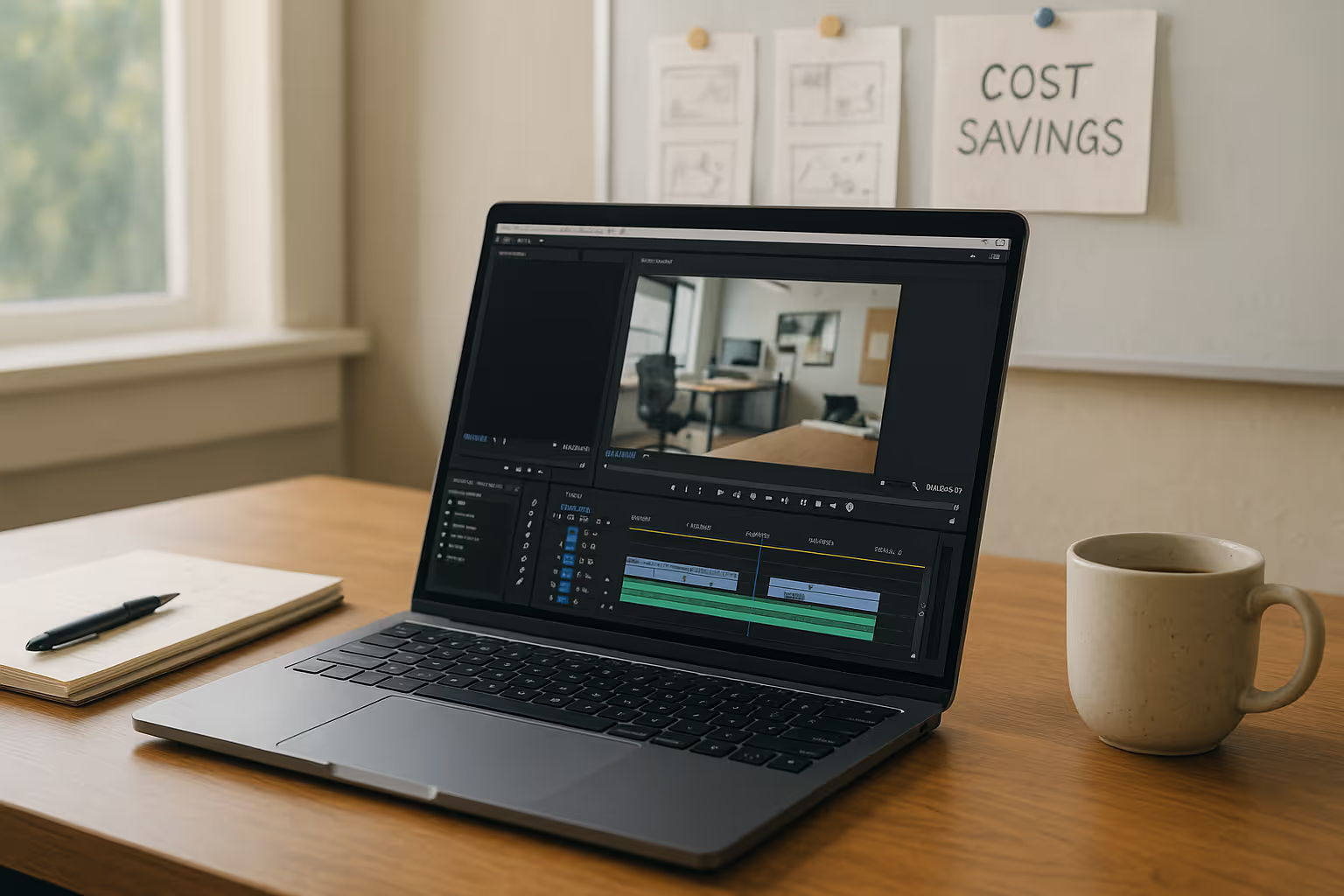These days, video marketing is practically a must-have for SaaS companies. In fact, nearly all marketers (97%) say that visuals make it easier for audiences to grasp what their brand is all about. But as the price tag for professional video production keeps climbing, marketing budgets can start to feel the squeeze. Here’s the best part: you don’t need a sky-high budget to produce great-looking videos. With a bit of smart planning and the right tools in your corner, SaaS marketers can trim video production costs without sacrificing the polished, conversion-driving quality that matters most.

What Really Drives the Cost of SaaS Video Production?
Before you start looking for ways to cut costs, it helps to know what you’re actually spending in the first place. On average, producing a SaaS video will set you back anywhere from $900 to $4,000 for every minute of finished footage. If you’re just getting started, you’ll likely pay less than $1,400 for each minute of video. However, once you’re an established brand chasing that premium look, do not be surprised if the price climbs past $3,400 a minute. If you’re tackling a full-scale SaaS video project, do not be surprised if the price tag lands anywhere between $30,000 and $100,000 since it all comes down to how complex the animation is and just how big the project gets.
What really bumps up the price are things like how long your video is, how complex the animation gets, hiring professional voiceover talent, going through several rounds of revisions, and paying for music or stock footage licenses. Knowing what drives up costs lets you spot where you can save money without having to cut corners on quality.
Smart Planning Strategies for Budget-Conscious Production
Define Clear Objectives and Scope
Cost-effective video production always starts with solid, thoughtful planning. Before you even think about firing up your video editor, take the time to figure out exactly who your audience is and really get to know what makes them tick. When you really know who your audience is, how they think, what they care about, and what makes them tick, you can create videos that feel personal and relevant, giving you way more bang for your buck.
Get specific about what you want each video to achieve. Is your goal to get your brand noticed, bring more visitors to your site, or encourage people to interact with your content? What you want to achieve will directly influence every creative choice you make, from the tone and style of your video to the way you prompt viewers to take action. When you’re clear from the start, you avoid expensive do-overs and make sure your time and budget go exactly where they’re needed.
Focus on Essential Features
The number one mistake people make with product demo videos is trying to cram in every single feature. Rather than bombarding your audience with an exhaustive rundown of every feature, zero in on the one to three highlights that actually matter most. Not only does this approach make production simpler, but it also helps your audience stick around and actually get what you’re saying.
Think about what you typically show potential customers during real sales conversations. Build your video content around these tried-and-true talking points since they’re what keep your message relevant and make it stick.
Curious to learn more? Let’s chat and explore how VideoPulse can support your video strategy.
Leveraging DIY Production Tools and Templates
Free and Low-Cost Video Editing Software
Video editing software has come a long way, and these days, you can get your hands on some seriously powerful tools without shelling out for expensive licenses. DaVinci Resolve is hands-down the top choice when it comes to free video editing software since it packs in professional-level features you’d normally only find in pricey, high-end programs. You get everything (color correction, audio editing, and advanced tools) with zero watermarks or annoying time limits holding you back.
If you’re working on a quick project, CapCut makes editing a breeze since its straightforward tools are ideal for short-form videos. You’ll find features like keyframe animations, automatic captions, background removal, and ready-made templates, all of which make this platform a great fit for social media videos and product demos.
Here are a few more great free options worth checking out:
- Clipchamp, which comes pre-installed on Windows 11 and even lets you record your screen.
- Kdenlive, an open-source editor that still manages to pack in plenty of pro-level features.
- Canva’s video editor, which runs right in your browser and comes loaded with a library of stock assets.

Content Repurposing Strategies
Maximize Value from Single Productions
Repurposing video content simply means taking videos you already have and reshaping them into new formats so you can use them in a variety of ways. Instead of starting from scratch every time, this approach lets you squeeze more value out of the content you’ve already created.
The best way to repurpose your content is to start by creating one solid, in-depth piece that you can use as your foundation. Start by filming a 5-to-9-minute YouTube video on your main topic, then pull out five standout moments you can use as separate clips. That’s a whole week’s worth of social media posts, ready to go.
Take your video transcript and run it through an AI tool, and you’ll instantly have the makings of several blog posts, each one digging into a different angle from your original video. With this approach, one video can keep your content calendar full for weeks.
Tailoring Your Videos for Each Platform
Every platform has its own quirks when it comes to video. What works on one might fall flat on another. Quick, attention-grabbing clips are perfect for platforms like Instagram and Twitter, where people tend to scroll fast and don’t linger. On the other hand, if you’re posting on YouTube or your website (places where viewers are looking for in-depth information) longer, more detailed videos are the way to go.
You can easily turn your existing videos into bite-sized clips for platforms like YouTube Shorts or Instagram Reels, which are perfect for catching the attention of a wider audience. By sharing your videos across different platforms, you can reach a much wider audience without seeing your production costs go through the roof.
Building a Video Library That Grows With You
Create video content in flexible, bite-sized pieces you can easily update or reuse as your needs change. Product demo videos that walk viewers through each step at their own pace and are simple to update as your product changes keep delivering value over time and save you from having to do a full re-shoot every time your software evolves.
Want to see what’s possible? Reach out and we’ll walk you through a smarter way to create impactful videos.

Tracking ROI and Making Every Dollar Count
How to Measure If Your Videos Are Working
If you want to cut costs without losing impact, make sure you have a solid way to measure what’s working. When it comes to measuring ROI, customer acquisition cost (CAC) is one number you definitely want to keep an eye on. Let’s say you spend $5,000 making a video and it ends up bringing in 50 new customers. That means each customer cost you $100 to acquire.
Here are the key metrics you’ll want to keep an eye on:
- Play rate: which tells you if people actually hit play and watch your video once it’s loaded
- Average engagement: which shows how much of your video people actually watch on average
- Click-through rate: which shows how many viewers actually took the next step you wanted, like clicking a link or button
- Track conversions: by adding clear calls-to-action and reviewing them periodically
Figuring Out If Your Video Spend Makes Sense
The basic ROI formula for video content is: ROI = (Gain from Investment - Cost of Investment) / Cost of Investment × 100%. Let’s say you spend $19,000 on a video and it brings in $55,400 in value. That’s an ROI of about 192%.
To get a clear picture of your real ROI, make sure you’re tallying up both the obvious expenses, like production fees, software, and equipment, and the less visible ones, such as your team’s time and what you spend on distribution. Seeing the full picture makes it much easier to spot which production methods will save you the most money next time around.
Smarter Ways to Cut Video Costs
Teaming Up to Create Videos
Why not join forces with brands or influencers whose audiences align with yours and create content together? When you team up with others, you not only split the costs but also get your brand in front of a whole new crowd. Small businesses often miss out on this strategy even though it’s a great way to expand your reach without sending your budget through the roof.
Letting Automation and AI Do the Heavy Lifting in Video Production
These days, AI tools can really help you cut down on post-production expenses. AI tools can handle the tedious stuff, like turning speech into text, reformatting your videos, and making sure everything looks good no matter where you share it. With these tools, you can quickly pull out key quotes, whip up summaries, and even get hashtag suggestions, all of which save you a ton of time on manual editing.
With today’s text-to-speech technology, you can often skip hiring a professional voice actor altogether. AI voiceovers aren’t the best fit for every project, but they can save you money when you need a quick product update or an internal training video.
Investing Wisely in Your Gear
Instead of shelling out money to rent gear over and over, think about investing in a few key pieces of equipment you’ll actually use. These days, your smartphone probably has a camera that can capture surprisingly high-quality video, which makes it a great, wallet-friendly way to kick off your video projects. Want to boost your video quality? Just add a few budget-friendly extras, like a stabilizer or an external mic, to your smartphone setup and you’ll notice the difference right away.
Mistakes to Watch Out For
Trying to Do Too Much on Your First Projects
A lot of SaaS companies fall into the trap of chasing perfection with their very first video projects. Kick things off with straightforward, practical videos that actually help you hit your main goals. Once you’ve shown that your videos are paying off and your team’s skills have grown, it’s easy to start raising the bar on production quality.
Forgetting About Distribution Costs
As you work to trim production costs, make sure you’re not forgetting about what it takes to actually get your videos out there. Take advantage of free platforms like YouTube, Instagram, and TikTok to get your content out there. Make sure your content can reach as many people as possible on its own before you start spending money on ads.
Overlooking How Your Strategy Will Scale Down the Road
Pick tools and strategies that can keep up as your needs change. Marketers who have already dipped their toes into video are actually 76% more likely to boost their budgets down the road, so it’s smart to choose tools and strategies that can grow with you and avoid a major overhaul every time your needs change.
How to Craft a Video Strategy That Delivers Results Without Breaking the Bank
If you want a video marketing strategy that’s both affordable and built to last, you’ll need to strike the right balance between cutting costs and keeping your quality standards high. Begin by setting clear goals, take advantage of free or budget-friendly tools, and make the most of your content by reusing it across different platforms. Keep in mind, nearly seven out of ten people would rather watch a video than read about a new product or service, which means when you play your cards right, investing in video can really pay off.
If you want to cut costs without sacrificing quality, it’s not about cutting corners. Instead, it’s about finding smarter ways to get the job done. When you really get to know your audience, plan ahead, and pick the right mix of tools and tactics, you can turn out videos that get results without draining your marketing budget.
Thinking it’s time to shake up the way you create SaaS videos? Discover how VideoPulse's comprehensive platform can help you create, edit, and optimize professional videos while keeping costs under control. Contact us today and see the difference strategic video production can make for your SaaS business.

